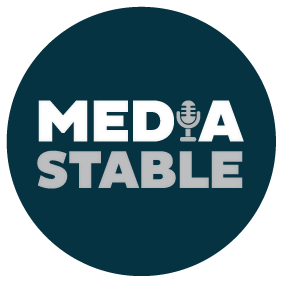Here’s why you should be on the radio
Last year was a tempestuous one for much of the media as major players like Newscorp and Fairfax continued to shed staff in a bid to lower costs to counter dwindling ad revenue and circulation, with photographers, producers, editors and journalists all in the firing line. Free to air broadcaster Network 10 teetered on the edge until a lifeline came from US broadcasting giant CBS, who bought the ailing network for a bargain $123 million. New media also felt the heat with the Huffington Post – Fairfax joint venture ending suddenly at year’s end leaving the future of the Australian arm of the Huff Post uncertain. And Pandora Music quietly shut down its Australasian headquarters and streaming service after struggling to keep up with rivals Spotify and Apple Music.
But throughout all of the turmoil radio continued to grow its audience amongst widespread media disruption and competition. According to research from GFK, live Australian radio was still the most listened to audio platform in 2017 accounting for 65.3% of time spent listening to audio, up from 64.9% in 2016. Further, it found Australians listen to an average of 3 hours 20 minutes of audio each day and 2 hours 10 minutes of this is spent listening to live Australian radio, compared to 15 minutes listening to streaming services.
Community radio in Australia is setting records for its highest ever national listenership with the latest survey from the Community Broadcasting Association of Australia finding community stations are attracting 5.362 million listeners per week, with an increasing number of people only listening to community radio.
So how has radio not only maintained but grown its audience? The most recent Radio Insight report looked beyond the mere numbers and focused instead on the “why” of radio listener’s habits. This report, I believe, indicates how well radio has adapted to the new media landscape, and explains why radio continues to flourish in these uncertain times.
Radio was one of the earlier and most successful adapters of social media and most networks financed top-flight, well-resourced websites and apps to complement their terrestrial signals. So it’s no surprise to me that the report found almost 2 in 3 radio listeners engaged with one or more of radio’s other platforms in the last year (Websites, social media, podcasts, apps, events or direct contact with the station). An astounding 1 in 4 people interacted with a radio stations’ social media page(s) at least monthly, demonstrating the loyalty and connection made through radio. ABC youth station Triple J’s Hottest 100 is a great example of how radio drives listener engagement, with 2,386,133 votes cast for this year’s countdown, up 5.81% from last year, despite the controversy surrounding the broadcast date.
In this era of fake news, credibility and trust have never been more important and this is where radio scores very highly against other platforms. The Radio Insight report found 42% of respondents considered radio trustworthy, compared to 24% for TV, 18% for online and 15% for newspapers/magazines. And 53% of respondents consider radio a credible source of news, compared to 44% for TV, 27% for online and 24% for newspapers/magazines.
Radio survives and grows because it’s authentic; it develops meaningful relationships with its audience and has adapted to the threat of new media, not always by trying to compete but by using some of those threats to complement its existing platforms.
So the next time you’re called for a radio interview, be it from a metro heavyweight or a regional community station consider the reach and impact your content may have…Radio may not have the glamour and glitz of TV but it’s an honest, connected and trustworthy way to have your message and expertise heard.
Happy listening!
John Solvander – Media Stable’s Director of Media Engagement
